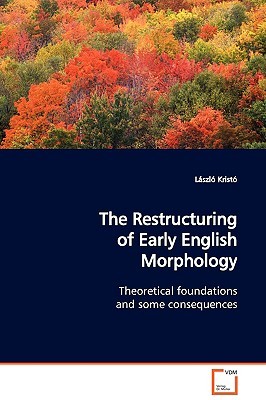
- We will send in 10–14 business days.
- Author: László Kristó
- Publisher: VDM Verlag
- ISBN-10: 3639129555
- ISBN-13: 9783639129557
- Format: 15.2 x 22.9 x 0.9 cm, softcover
- Language: English
- SAVE -10% with code: EXTRA
Reviews
Description
Even though the synchronic and diachronic aspects of linguistics have been rather strictly separated in theory, actual practice has shown a mutual interest between these areas of the study of language. CVCV Theory is no exception. The author uses this theory to analyse the restructuring of regular inflectional morphology between Old and Middle English. The book comprises three basic parts. Firstly, elementary notions of historical linguistics are considered, and the dependence of diachronic study on general linguistic theories is pointed out. Secondly, the author discusses the interaction of phonology and morphology; the relevant claims of CVCV Theory are introduced as well. Thirdly, an analysis of the restructuring of early English morphology is presented, using CVCV Theory. It will be shown that this particular theory may help us to analyse early English from some new perspectives which often fall out automatically as a consequence of the use of this particular theory. The book will be of interest to historians of Old and Middle English as well as to theoretical phonologists and morphologists who are interested in historical analyses.
EXTRA 10 % discount with code: EXTRA
The promotion ends in 17d.13:13:14
The discount code is valid when purchasing from 10 €. Discounts do not stack.
- Author: László Kristó
- Publisher: VDM Verlag
- ISBN-10: 3639129555
- ISBN-13: 9783639129557
- Format: 15.2 x 22.9 x 0.9 cm, softcover
- Language: English English
Even though the synchronic and diachronic aspects of linguistics have been rather strictly separated in theory, actual practice has shown a mutual interest between these areas of the study of language. CVCV Theory is no exception. The author uses this theory to analyse the restructuring of regular inflectional morphology between Old and Middle English. The book comprises three basic parts. Firstly, elementary notions of historical linguistics are considered, and the dependence of diachronic study on general linguistic theories is pointed out. Secondly, the author discusses the interaction of phonology and morphology; the relevant claims of CVCV Theory are introduced as well. Thirdly, an analysis of the restructuring of early English morphology is presented, using CVCV Theory. It will be shown that this particular theory may help us to analyse early English from some new perspectives which often fall out automatically as a consequence of the use of this particular theory. The book will be of interest to historians of Old and Middle English as well as to theoretical phonologists and morphologists who are interested in historical analyses.


Reviews